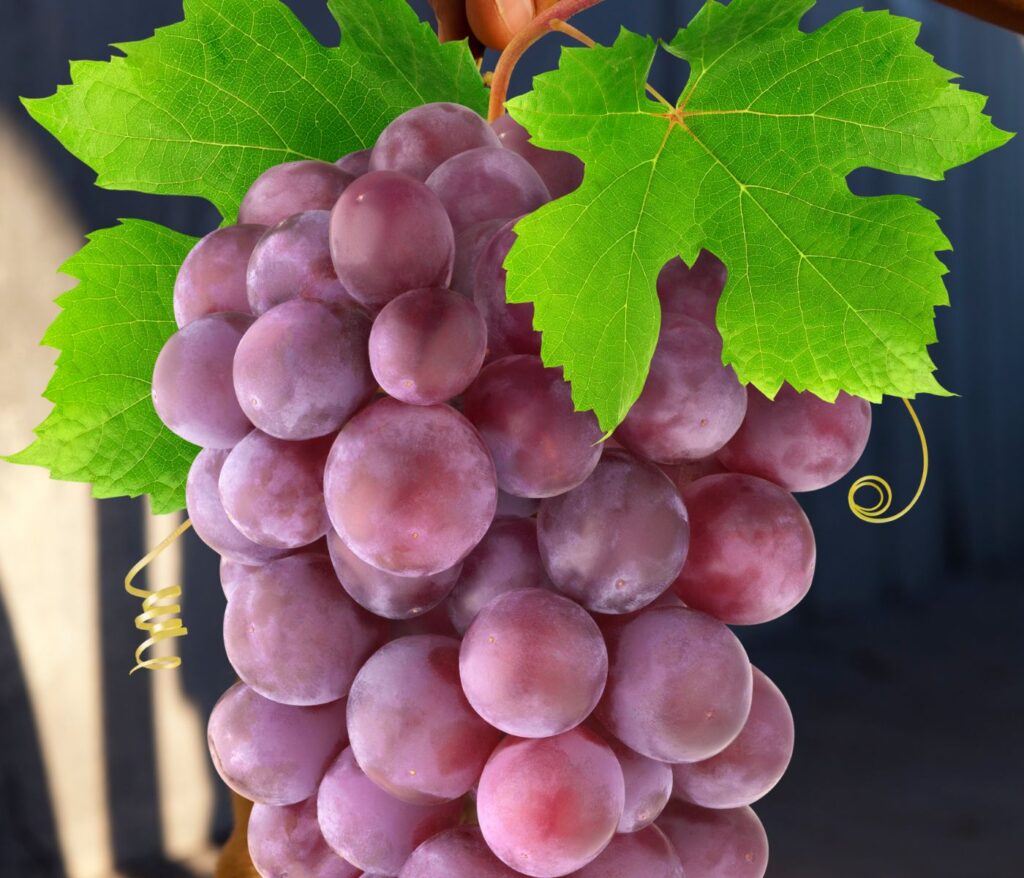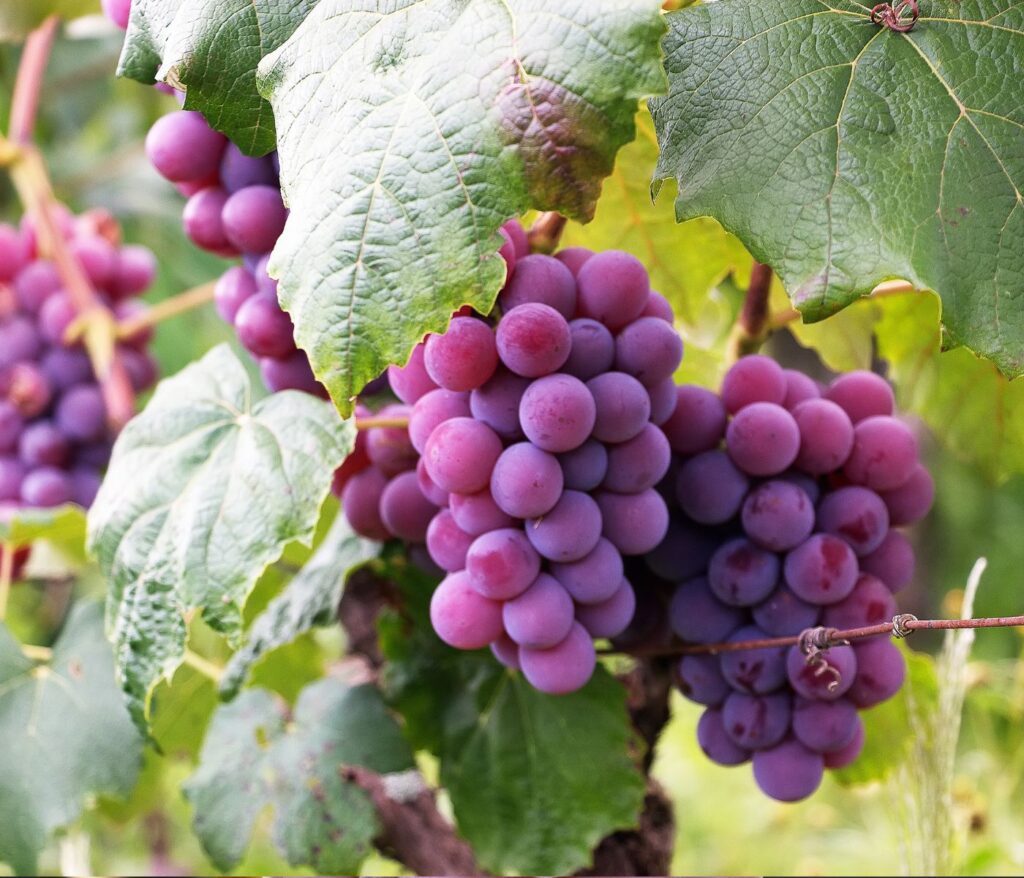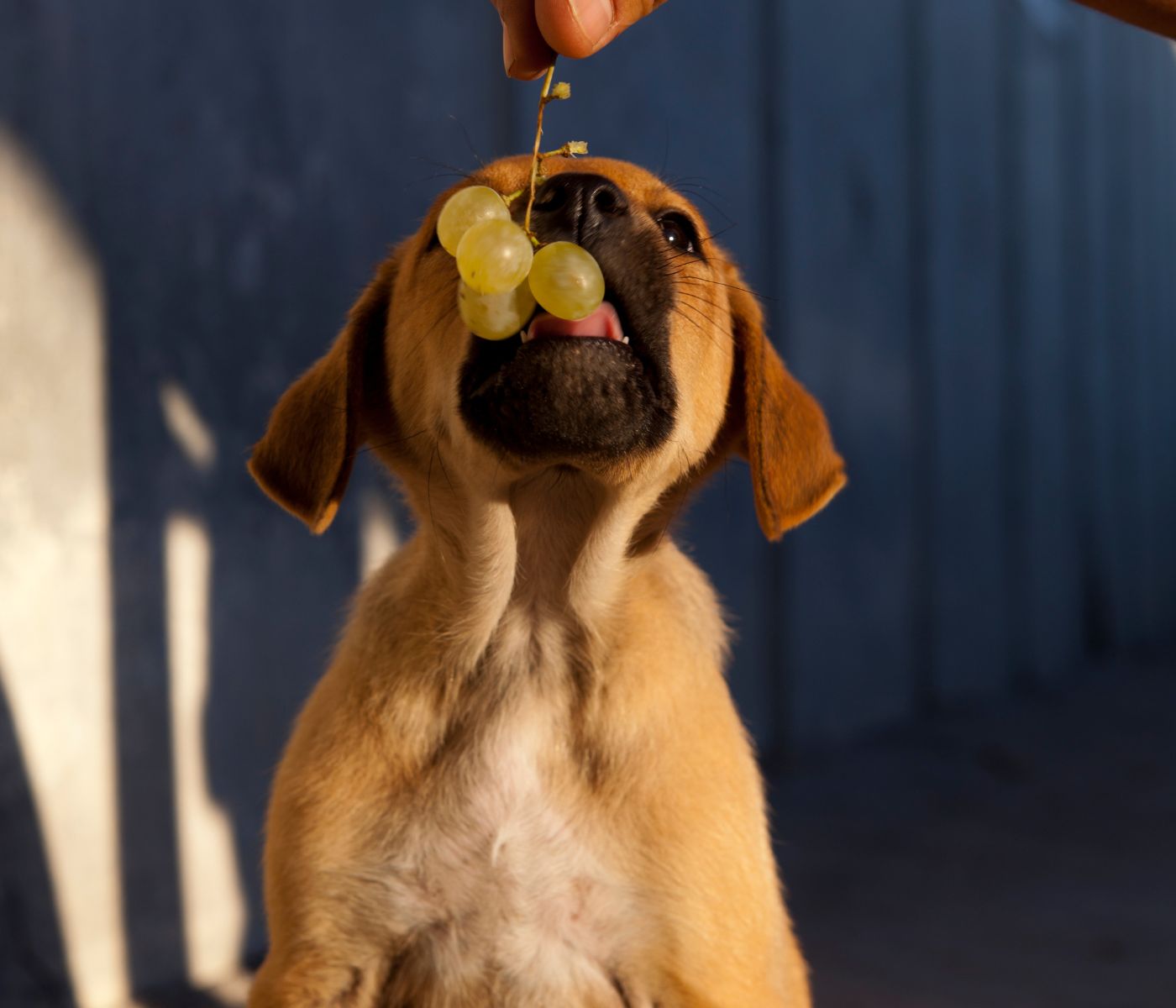=Grape leaves are a typical element in Mediterranean and Middle Eastern cuisine, but many dog owners are unaware that they are healthy or harmful to their pets.
So the question is can grape leaves be given to dogs? And the answer is Grape leaves are dangerous for dogs, yet many owners are unaware of this risk.
Even seemingly innocent grape leaves can have devastating implications for dogs.
Indeed, the poisonous substances present in grape leaves can cause a variety of health difficulties, ranging from moderate digestive troubles to life-threatening kidney failure.
This is why pet owners must be aware of the risks linked with grape leaves and take precautions to keep their dogs safe.
We’ll look at why grape leaves are harmful to dogs and offer advice on how to keep your pet safe from these hazards.
What Cause Grape Leaves to be Poison in Dogs?

Grape leaves are a popular cooking ingredient because of their earthy flavor and adaptability. Yet, many dog owners are unaware that grape leaves can be poisonous to dogs.
Grape leaves, even in little amounts, can cause major health problems in dogs, ranging from digestive disorders to kidney failure.
We’ll look at the poisonous chemicals in grape leaves and why grape leaves are bad for dogs.
1. Tannins
Why are tannins bad for dogs? Tannins are one of the most poisonous chemicals found in grape leaves. They are polyphenols that give the leaves a bitter taste.
Tannins can bind to proteins in the body, make them harder to digest.
When a dog consumes grape leaves, tannins can induce stomach and intestine inflammation, resulting in vomiting, diarrhea, and other digestive issues.
Excessive tannin consumption can also cause metabolic acidosis, a condition in which the blood becomes overly acidic.
This can result in severe medical conditions such as convulsions, coma, or even death.
2. Oxyalate
Oxalates are another poisonous chemical present in grape leaves. These are plant-based chemicals that, if consumed in large quantities, might cause kidney injury.
Typically, oxalates are eliminated they are excreted from the body through urine, but if they build up, they can form crystals that harm the kidneys, leading in acute renal failure.
Dogs who already have kidney or bladder problems, as well as pups and older canines, are especially vulnerable to oxalate toxicity.
Vomiting, diarrhea, tiredness, and a loss of appetite are all symptoms of oxalate poisoning.
3. Nutrition and Hydration
Grape leaves have little nutritional value and might cause dehydration in dogs if consumed in excessive quantities.
Dogs who consume a large amount of grape leaves may get dehydrated, which can lead to electrolyte imbalances, heat stroke, or other significant health issues.
Another potential risk for dogs who swallow grape leaves is bladder stones. Bladder stones are mineral deposits that accumulate in the bladder of a dog over time.
Grape leaves’ high oxalate content can contribute to the production of stones, causing discomfort and potentially leading to urinary tract infections or blockage.
Click the link below to know more about can dogs eat grapes?
https://www.youtube.com/watch?v=XE9ef-FsOmY
5 Reasons Why Grape Leaves Are Toxic To Dogs

1. Hazardous compounds
Grape leaves contain a variety of toxins, including tannins and oxalates, which can cause stomach distress, vomiting, and diarrhea.
These substances can also cause bladder stones to form, especially in dogs who are predisposed to this health issue
2. Kidney failure.
In some situations, consuming grape leaves or grapes might result in acute renal failure, a serious illness.
This is because the poisonous substances in grapes and grape leaves can cause renal cell damage, resulting in a sudden and significant loss in kidney function.
This is a potentially fatal ailment that necessitates quick veterinarian attention.
3. Inflammation
When dogs swallow grape leaves, their digestive systems might get inflamed, resulting in diarrhea of health complications.
Inflammation can increase intestinal permeability, making dogs more vulnerable to infections and other health issues.
Pro-inflammatory cytokines, which are released in response to inflammation, can aggravate autoimmune illnesses in dogs
4. Allergic Reactions
Grape leaves can induce a variety of allergic symptoms in dogs, including itching, redness, and swelling.
In more extreme situations, dogs might develop anaphylaxis, which can be fatal if not treated promptly.
5. Organ Damage
Grape leaves can potentially harm a dog’s organs. When dogs eat grapes or grape leaves, their livers might become damaged and cease working properly.
This can result in a variety of health issues, including liver failure, which can be fatal if not treated.
Why are dogs particularly vulnerable to grape leaf toxicity?
Dogs are more sensitive to the poisoning of grape leaves than living beings this is due to the fact that dogs metabolize these hazardous substances differently than humans and lack the enzymes required to break them down.
As a result, dogs who consume grape leaves are more prone to acquire major health problems.
What are the consequences of a dog consuming grape leaves?
Grape leaf poisoning in dogs manifests differently depending on how much of the leaf is ingested. Vomiting, diarrhea, loss of appetite, tiredness, and abdominal pain are some of the most prevalent symptoms.
If your dog exhibits any of these symptoms after swallowing grape leaves, it is critical that you seek veterinary attention.
What should I do if my dog consumes grape leaves?
Grape leaves are a common element in many cuisines around the world, and while they are not hazardous to people but what happen if a dog has eaten grape leaves?
If your pet has consumed grape leaves, it is critical to act quickly to avoid significant health concerns here are the procedures to take if your dog has eaten grape leaves.
-
Recognize the Sign
The first thing to do if you suspect your dog has eaten grape leaves is to search for any symptoms.
Some of the signs of grape leaf toxicity include vomiting, diarrhea, and loss of appetite, abdominal pain, dehydration, and kidney failure, as previously stated.
If you observe any of these signs, it is critical that you respond quickly.
2. Make an appointment with your veterinarian.
If you suspect your dog has eaten grape leaves, contact your veterinarian immediately.
Give them with details on the type and quantity of leaves consumed by your dog, as well as any symptoms he may be experiencing.
Your veterinarian may advise you to bring your dog in for an examination or to monitor your dog’s symptoms at home.
3. Cause Vomiting
If your dog has recently taken grape leaves, your veterinarian may recommend causing vomiting to eliminate any remaining grape leaves from their stomach.
But, only do this if your dog swallowed the grape leaves within the last two hours.
If your dog is sick, you should never make him puke displaying neurological signs, straining to breathe, or is unconscious.
4. Offer Complementary Care
If your dog exhibits symptoms of grape leaf toxicity, your veterinarian may administer supportive therapy such as IV fluids to help with hydration, drugs to treat symptoms such as vomiting or diarrhea, and blood work monitoring.
Your dog may need to be hospitalized in order to receive proper care.
Grape leaves are hazardous to dogs, and you must act quickly if you suspect your dog has swallowed them.
Contact your veterinarian right away if you notice any of the symptoms of grape leaf intoxication.
They will be able to advise you on the next steps to take to protect your dog’s health.
Can I prevent my dog from eating grape leaves?
Grape leaves are toxic to dogs and can cause major health problems if swallowed. As a result, it’s critical to take precautions to keep your dog from ingesting grape leaves.
Here are some pointers to help you keep your pet safe.
1. Avoid giving your dog grapes.
Keeping your dog away from grape vines is the simplest approach to keep them from eating grape leaves.
If you have grapevines in your yard or garden, secure them with fences or obstacles so your dog cannot get them. You could also choose to eliminate the grape vines entirely.
2. Educate Your Dog
Training is another approach to keep your dog from eating grape leaves. Teach your dog the fundamentals of obedience orders like “leave it” and “drop it”.
This training will help your dog understand that grape leaves are not for them and will keep them from consuming any leaves they come across.
3. Employ Scents to Discourage Your Dog
Some canines respond positively to odours that are unpleasant to them. To keep your dog from getting too close to the grape vines, spray it with citronella or eucalyptus oil.
Simply avoid using any odours that could be detrimental to your dog or other animals.
4. Provide Safe Alternatives
Finally, provide your dog safe alternatives to gnawing on grape leaves. Provide a range of safe chew toys for your dog, such as rubber toys, raw meat bones, and dental chews.
This may meet your needs Dogs’ desire to chew is reduced, as is their interest in other things such as grape vines and leaves.
CONCLUSION
Grape leaves are a hazardous food for dogs that can cause a variety of health difficulties ranging from mild digestive disorders to acute kidney failure.
As a good pet owner, you should be aware of the dangers of certain foods and plants and keep them out of your dog’s reach.
If you suspect your dog has swallowed grape leaves, seek veterinarian care immediately; quick treatment can save your dog’s life.
